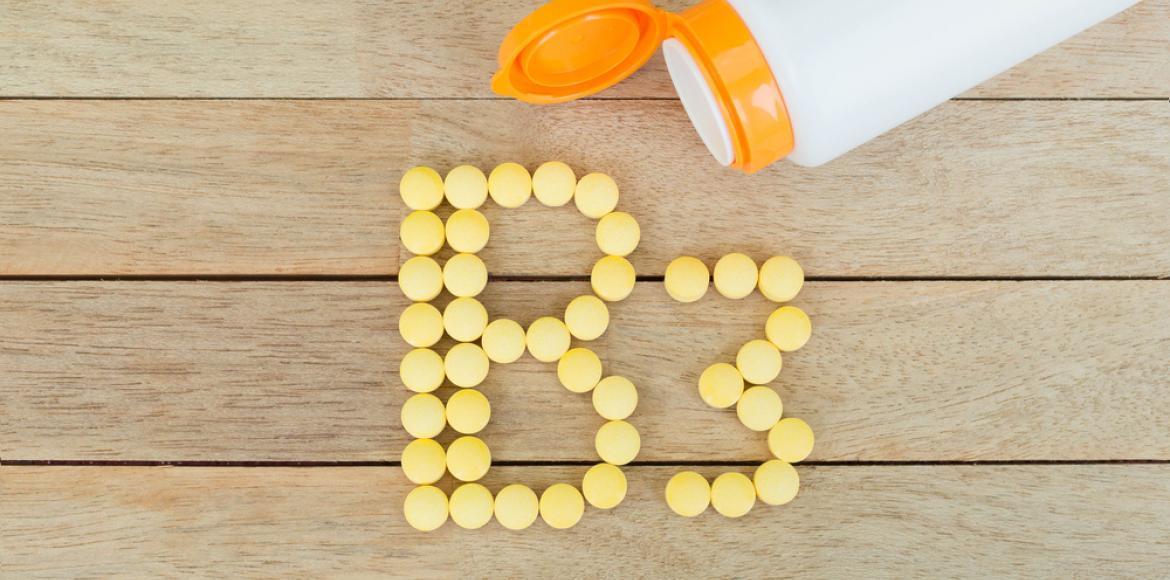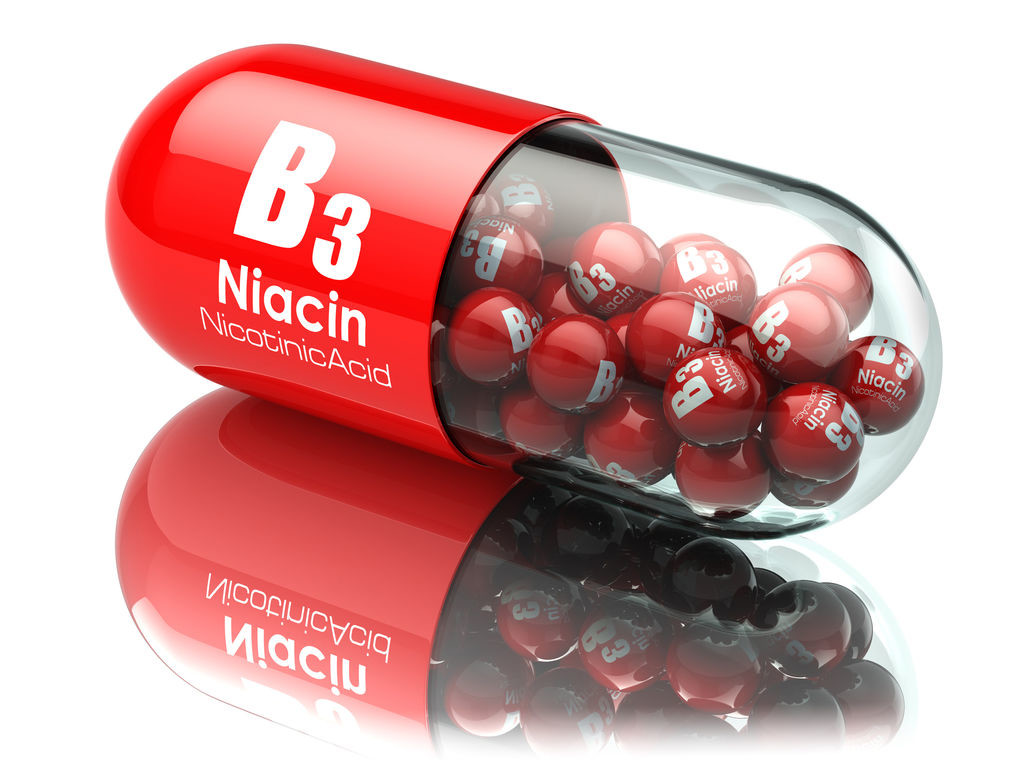Indispensable to our organism vitamin B3, PP or niacin is involved in a number of metabolic reactions. Particularly well-known for its effectiveness in treating hypercholesterolemia and combating skin disorders, the vitamin for blood circulation. To avoid any deficiencies that could damage our health, we need to know more about this vitamin.
[buzzsprout episode='5531455′ player='true']
This content is part of the guide Blooness, the guide to the ideal human diet, the summary of which you can find here 🌱🥑

About vitamin B3 or PP
Isolated in 1937 by Elvehjem from liver extract, vitamin B3 was synthesized from nicotine. It is manufactured by the body from an essential amino acid called tryptophan.
It is found in abundance, particularly in the proteins of which animal proteins. To fill up on vitamin B3, simply eat a diet rich in animal proteins.
Take control of your diet and never miss another chapter of the guide by subscribing to the Blooness newsletter 🙌
Vitamin B3 is a water-soluble vitamin, dissolving in water.. Its other name, niacin, comes from two related compounds, nicotinic acid and nicotinamide, both of which have the same biological activity. Vitamin B3 has also long been used to prevent a disease called "pellagra", hence its other name PP.

The benefits and roles of vitamin B3 in the body
Vitamin B3 plays an important role in cellular respiration. It ensures a series of reactions (degradation of lipidsThese are the processes - glycolysis and oxidative phosphorylation - during which dietary fuels are broken down within our cells. Vitamin B3 is said to be a precursor of NAD and NADP, essential for energy production.
Niacin has a cholesterol-lowering effect, and is therefore indicated for lowering blood lipid levels. It also helps maintain tissue integrity, particularly in the arteries. When combined with other molecules, niacin can even prevent atherosclerosis.

Vitamin PP is indicated in the prevention of type 1 diabetes. It also helps repair damaged DNA. It even plays a role in the functioning of the nervous system, and interacts with other vitamins. vitamins of the same group, such as vitamin B1 and B2.
Vitamin B3 is involved in the synthesis of sex hormones (estrogen, progesterone, testosterone, etc.) as well as hemoglobin and insulin. It also ensures the production of neurotransmitters and contributes to normal psychological functions.
Finally, we need vitamin B3 to prevent premature aging of neuronal cells. It prevents neurodegenerative diseases such as Parkinson's and Alzheimer's. Our bodies also need a good dose of niacin to stimulate the synthesis of keratin, an essential component of the horny layer of skin and hair.

Recommended vitamin B3 intake
Our body needs to absorb around 16mg of vitamin B3 every day. This requirement then varies according to the age and condition of each individual. Pregnant women have an increased need for vitamin B3, as do athletes.
Recommended dietary intake of vitamin B3 is as follows:
| Age | Vitamin PP nutritional references (mg/day) |
| Infants 0 to 6 months | 2 à 3 |
| Babies from 7 to 12 months | 4 |
| Children aged 1 to 3 | 6 |
| Children aged 4 to 8 | 8 |
| Children aged 9 to 13 | 12 |
| Girls aged 13 to 15 | 11 |
| Boys aged 13 to 15 | 13 |
| Boys over 15 | 16 |
| Girls over 15 | 14 |
| Adult women | 14 |
| Adult men | 17.4 |
| Pregnant women | 16 à 18 |
| Nursing mothers | 15 à 17 |
When used as a medical treatment, vitamin B3 must be taken in higher doses than the recommended dietary allowance, and sometimes even the tolerable upper intake level. On the other hand, self-medication with vitamin B3 is not recommended, as despite its benefits, it can have harmful effects in frequent, high doses.

Eat a diet rich in vitamin B3
Some animal-based foods contain high levels of vitamin B3. These include offal, fatty fish (tuna, salmon), poultry (chicken, turkey), milk, eggs and meat.
Cereal foods also contain more vitamin PP than refined products. It's also found in sprouted seeds (oats, wheat, soybeans, dried peas), peanuts, potatoes, soybeans and peanuts. vegetables (beans), fresh fruit and vegetables (cabbage, mushrooms, peppers, avocado). Brewer's yeast also completes the recommended daily intake of vitamin B3.

The main dietary sources of vitamin B3
| Food | Vitamin B3 content (mg/100g) |
| Baked shad | 11 |
| Grilled haddock | 5 |
| Salted anchovy | 14 |
| Almond | 3,4 |
| Dried apricot | 2,7 |
| Canada goose, leg with skin, roasted | 10 |
| Cooked chicken breast | 10,6 |
| Duck | 10 |
| Veal leg, loin or shank, sautéed or braised | 8-11 |
| Domestic duck, meat only, grilled | 17 |
| Raw mushroom | 4,6 |
| Enriched breakfast cereals | 9 à 19,5 |
| Peanut | 24,9 |
| Milk-fed veal escalope, sautéed | 13 |
| Smoked sturgeon | 11 |
| Turkey escalope or cooked duck breast | 13,5 |
| Cooked swordfish | 9,8 |
| Atlantic or Pacific halibut, grilled | 7 |
| Beef, lamb or veal liver, sautéed or braised | 12-17 |
| Pacific oysters, raw or steamed | 2-4 |
| Simmered or roasted rabbit | 7-8 |
| Brewer's yeast | 18,5 |
| Dehydrated and salted Atlantic cod | 8 |
| Grilled Spanish mackerel | 11 |
| Chicken, white meat with or without skin, roast | 15-20 |
| Pork, various cuts, grilled | 5 |
| Wholemeal bread | 2,4 |
| Organic bise flour bread | 2, |
| Poached salmon | 17-18 |
| Baked red tuna, Spanish mackerel, king mackerel, salmon | 9-11 |
| Yellowfin tuna or swordfish, baked or grilled | 12 |
| Canned tuna | 12-13 |
| Canned tuna in oil | 17 |
As a reminder, vitamin B3 is water-soluble. It escapes in food juices and cooking water. Steaming is therefore highly recommended to avoid any loss of vitamin B3 in our diet. We also recommend stewing foods and eating the juices from meats and offal.

Vitamin B3 deficiency and overdosage: what are the dangers?
As we grow (and age), our vitamin B3 requirements change. We therefore need to adapt our intake to these needs to avoid niacin deficiency.
While vitamin B3 deficiency is rare, cases of severe malnutrition or alcoholism are more frequent. Niacin deficiency manifests itself primarily in serious skin disorders such as pellagra, depigmentation and itching. Other symptoms include headaches, loss of appetite, tingling in the hands and feet, dizziness, mood swings and fatigue. Over the long term, it can lead to nausea, diarrhoea and, in rare cases, dementia.
Consumed in high doses (from 100 mg/day), vitamin B3 can cause vasodilatation of the blood vessels, responsible for hot flushes and severe itching. A dose of 700 mg/day of niacin can be toxic to the liver (hepatotoxic). In the long term, hyperinsulinism, type 2 diabetes and obesity may be observed.

Interactions with other drugs
The benefits of vitamin B3 are enhanced by a sufficient intake of vitamins B1, B2 and B6. However, niacin supplements should not be taken if you are being treated for alcoholism, hypercholesterolemia or liver disease. In such cases, vitamin B3 can cause serious damage.
The cholesterol-lowering effect of certain plants (garlic, psyllium, phytosterols, guggul) complements that of vitamin B3. On the other hand, combining niacin with antioxidants greatly reduces its benefits.
Other drugs that can be combined with niacin in high doses (over 75 mg/day) include isoniazid (an antibiotic used to treat tuberculosis), anticonvulsants (carbamazepine, diazepam) and cholesterol-lowering drugs (statins, colestipol).
Needless to say, a Blooness-type diet, rich in lipids and animal proteins, is more than sufficient to cover our vitamin B3 needs.
Next chapter: vitamin B5.
Previous chapter: vitamin B2.

